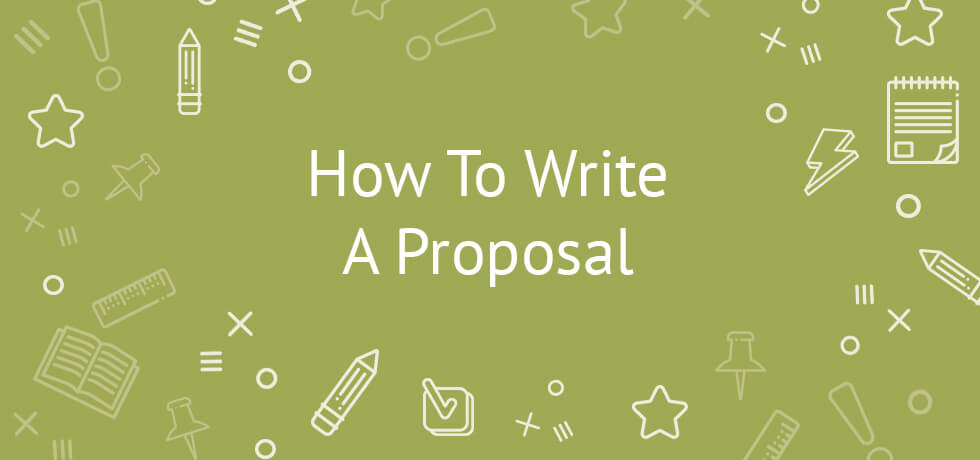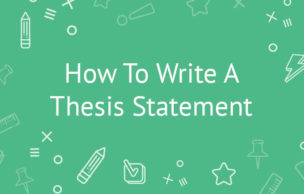How to Write a Proposal
Creating a proper proposal represents an essential capability in a lot of fields, such as education, business or biology. A proposal has the purpose of obtaining assistance for a project by notifying the right individuals. For your plans or propositions to be authorized, you need to convey them in a straightforward, brief and captivating way. You cannot be successful in your field of work unless you have the right skills to devise a compelling and attractive proposal. Depending on your target, there are various forms of proposals you could write, ranging from scientific proposals to book proposals. Nevertheless, any type of proposal must follow the same fundamental criteria.
How to Plan a Proposal
#1 Establish your target audience.
First of all, you must consider your target audience. Think about their extent of knowledge on the subject you want to inform them about. This way, you’ll be able to consolidate your thoughts and showcase them in the most efficient manner. Take into account that the people who read your proposal might browse through its content in a hurry and might not be inclined to give your thoughts too much attention. Effectiveness and eloquence are of the essence!
Think about the identity of your readers and their degree of experience with your subject. Ponder on which aspects you might be required to explain or provide additional data about. Consider what you hope your readers to understand from your proposal and what you must provide them with, so you can influence them to make a favorable decision.
Your writing style should be adapted so as to satisfy your readers’ expectations and wishes. Think about what they hope to hear and how you can adequately communicate it to them. What must you do for them to acknowledge the essence of your proposal?
#2 Explain your problem.
The paper writer must not be the only person who understands the problem. Your audience must also know what you’re talking about. Moreover, the reader must get the impression that you’re very knowledgeable about the issue. To back up your ethos, or identity, you must always support your statements. To do so, you must utilize proof and clarifications. By addressing the problem adequately, you can persuade the audience that you have what it takes to attend to it. When organizing this phase, you should ask yourself the following questions:
- To which particular case is the topic relevant?
- What are the specific motives?
- Am I positive that these are in fact the actual motives? How can I be so certain?
- Have other researchers worked on this particular topic before? Were they successful? If so, why? Did they fail? Why?
- Avoid writing a summary that is evident to anyone in the profession.
- Prove that you’ve carried out a thorough study and assessment to comprehend the topic.
#3 Explain your answer.
This phase ought to be clear and easy to comprehend. After establishing the problem you’re dealing with, think about how it can be fixed. Your answer should be brief and achievable. Keep in mind that you must abide by the entirety of the guidelines included in the RFP (request for proposal) file.
If you have enough time, go over and beyond the minimum level.
Your proposal must explain an issue AND provide an answer that has the potential of persuading indifferent, mistrustful readers to endorse it. You should be aware of the fact that some of your readers might not be easy to convince. This is why your proposed answer must be coherent and viable. Moreover, you must establish a timeline for your execution.
Your answer to the problem should be regarded in the form of several targets. The primary target represents the objective which must be accomplished by all means. Subsidiary targets represent different objectives that you strive to accomplish with your proposal.
Another useful manner of considering your answers is as results and deliverables. The term of results is used to denote the measurable effects of your targets. For instance, let’s say you want to write a business proposal with the target of “intensifying earnings.” In this situation, a possible result would be “intensifying earnings by $50,000”. The term of deliverables is used to refer to the commodities or facilities you will offer. For instance, a science plan could provide a new medication. When reading a proposal, people seek results and deliverables. By studying these elements, they can determine whether or not the plan has value.
#4 Don’t forget to use elements of style.
Your proposal should be written so as to match a specific style, which varies in accordance to your target audience. Think about the expectations of your readers. Ponder on whether or not they are concerned with your issue.
Avoid utilizing too much slang, incomprehensible short forms or uselessly intricate words (“correction of an office disparity”).
Use as many simple and straightforward terms as possible (“firing workers”).
This about how you can be compelling. While it’s alright to utilize effective pleas to increase the persuasiveness of your proposal, the foundation of your argument must always consist of certainties. For instance, let’s say you want to write a proposal in which you attempt to convince people to commence a dolphin preservation program. If that is the case, it might be a good idea to talk about how depressing it would be if these friendly animals disappeared forever. However, this shouldn’t be your only argument. If you want your proposal to have value, you must base it on certainties and substantiated answers.
#5 Devise a scheme.
While you will not include it in the proposal itself, it can aid you in structuring your ideas. Before making an outline, you should be aware of all of the important details. The scheme ought to include the following elements: the issue, the answer, the way in which you attempt to fix it, the reasons for which your answer is pertinent and the conclusion. If you need to devise an executive proposal, you must also add sections like a financial plan evaluation or organizational elements.
How to Write a Proposal

#1 Begin with a solid introduction.
You ought to attempt to captivate your readers from the very beginning. Your proposal needs to be as determined and practical as possible. To make your audience aware of the problem, utilize some background data. Afterwards, announce the objective of the proposal.
In case you know of any well-defined certainties that can clarify the reason for which the problem must be tackled at once, you should use them in the introduction. No matter what, you most always start a proposal with a certainty and not a personal belief.
#2 Assert the issue.
Once you complete the introduction, you need to start working on the body paragraphs, which constitute the substance of the proposal. At this point, you need to assert your issue. In case the audience is not well-informed about the topic, you should provide explanations. You should regard this as the “factual situations” phase of the proposal. Talk about the specific issue, its source and its consequences.
Highlight the reasons for which the issue must be fixed and the way in which it can be fixed. Describe how the problem can have an impact on the readers if left unattended. You must offer responses to all problems and support them using research as well as certainties. You should utilize plenty of credible sources.
Avoid using only universal pleas to feelings or moral principles. You should link the problem to the readers’ concerns or purposes in a straightforward manner.
#3 Suggest solutions.
In our opinion, this represents the most significant part of your proposal. In the solutions chapter, you need to state the way in which you’ll deal with the issue, the reasons for which you chose this approach and the potential results. To be certain that your proposal is compelling, you should pay attention to the following aspects:
- Talk about the greater significance of your viewpoints. If your viewpoints have a narrow pertinence, they have a low chance of raising the interest of the audience. This is why your viewpoints must have a broad impact. For instance: “An increased level of comprehension of tuna fish conduct has the potential of enabling us to devise a more thorough administration program and guaranteeing the provision of conserved tuna fish in the long run.”
- Talking about the reasons for which you plan to engage in a particular action is just as significant as affirming that action. You should start from the assumption that your audience is distrustful and will not take your viewpoints for granted. For instance, if you intend to conduct a certain experiment, you should explain why you believe it’s a good idea. Explain its advantages compared to other approaches. If your approach needs a higher budget, talk about why the more economical alternatives are not viable. Foreseeing and responding to such questions will demonstrate that you’ve examined your proposal from multiple perspectives.
Once they finish looking at your proposal, the readers should feel confident that you have the ability to fix the issue in an efficient way. Virtually every single sentence in your proposal should either refer to the issue or the way in which you plan to fix it.
Conduct a comprehensive research on your proposal. To make sure you’re able to persuade your readers, you should provide as many instances and certainties as possible. Steer clear of personal beliefs! Your ideas must base off of solid research.
If once you complete your proposal, you’re still not able to demonstrate that your answer is the right one, it means that you didn’t manage to come up with a suitable solution. If your solution is unviable, call it off! A good idea would be to pre-assess the solution and, if necessary, correct it.
#4 Add a calendar and a financial plan.
Your proposal amounts to an investment. To be able to persuade your audience that it’s a safe and efficient investment, you need to offer concrete details about your calendar and financial plan.
Avoid enumerating targets which are imprecise, unquantifiable or irrelevant to the issue at hand. Specify the duties and deadlines of every branch or member of the personnel.
When do you think the project will begin? How rapidly do you believe it will advance? Talk about the way in which every phase is linked to the previous one. Mention if some of the steps can take place at the same time. To persuade the audience that you know what you’re talking about and that their money is in good hands, you must be very methodical.
Your proposal must be viable from the financial perspective. If you’re suggesting a course of action to an enterprise or an individual, think about their resources. If your proposal is too expensive for them, your work will be in vain. If they have enough money to pay for it, explain why it’s a valuable investment.
#5 Conclude your proposal.
Your conclusion ought to reflect your introduction, briefly summarizing your primary communication. In case your proposal can lead to some outcomes that are not assumed, designate them. Sum up the advantages of your proposal and highlight the idea that these advantages compensate for the expenses. Encourage your readers to think ahead. In the end, don’t forget to express your gratitude that they took their time to consider your proposal.





